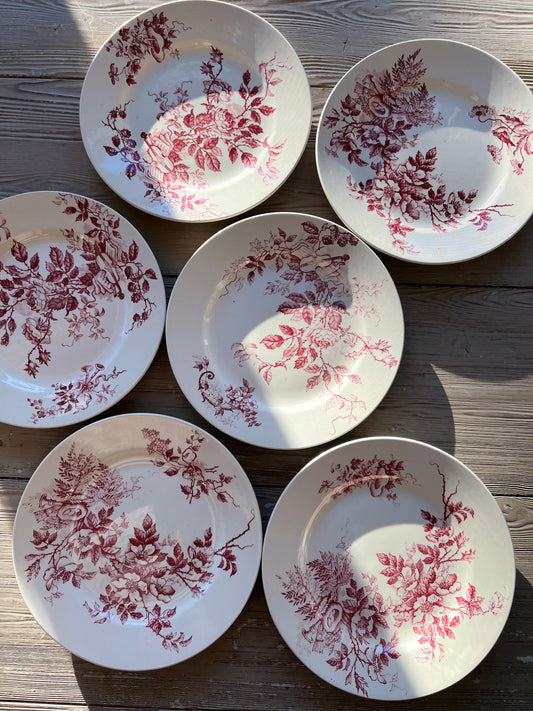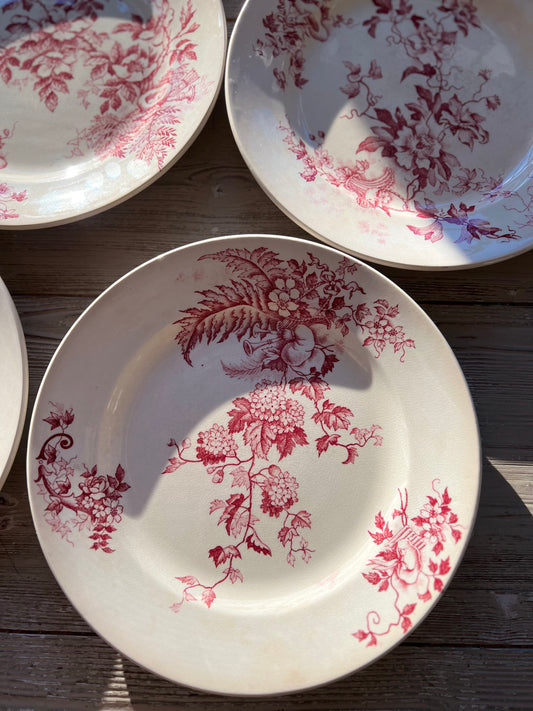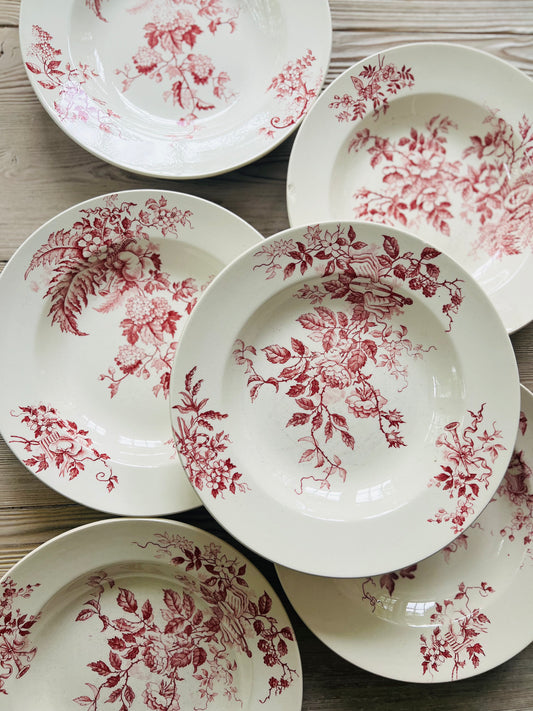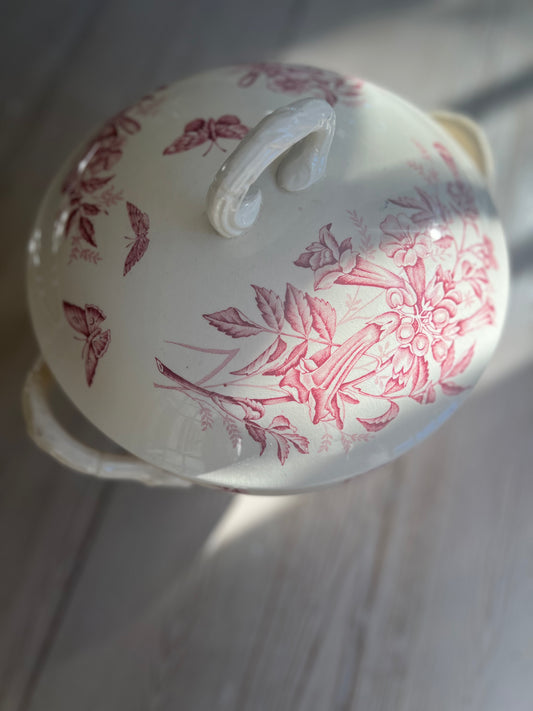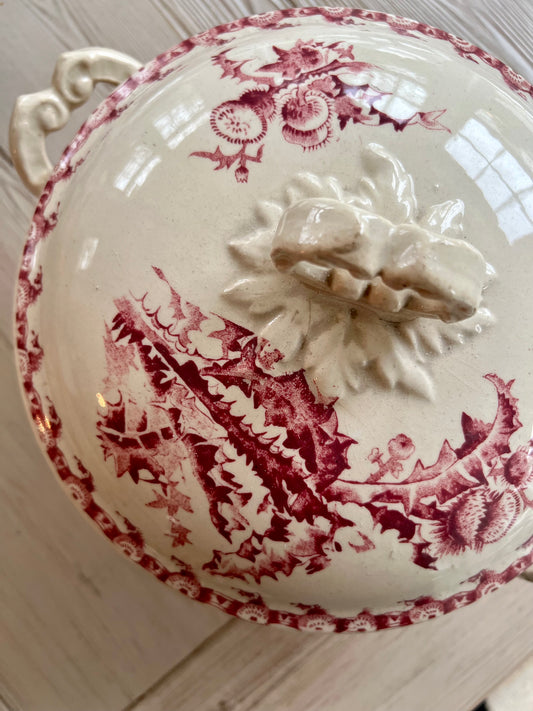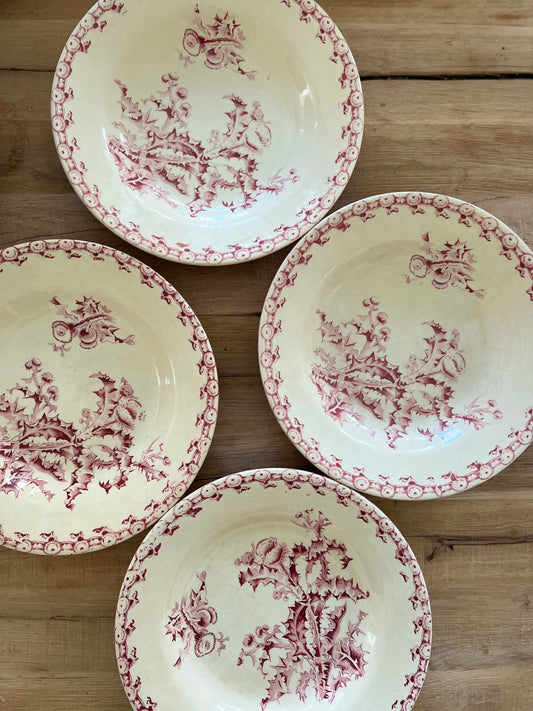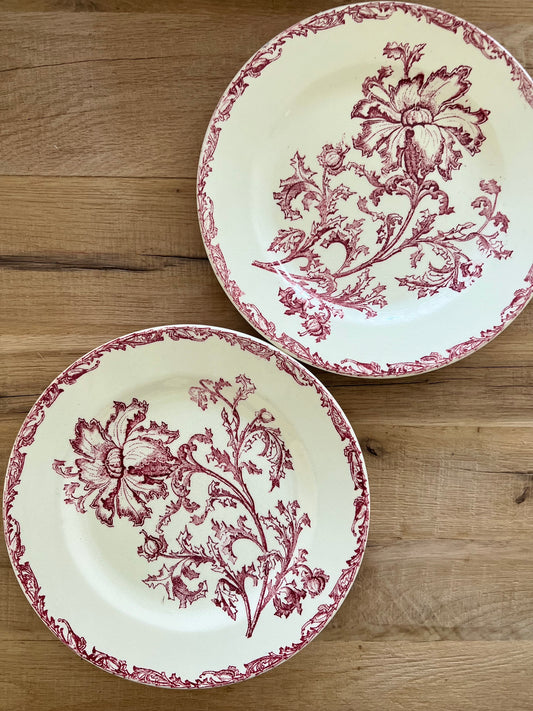Collection: A Journey to 19th Century France : Antique Ironstone Dinnerware
Enter the splendor of the 19th century with our exquisite French ironstone dinnerware collection. Ironstone tableware emerged in France around 1770 and is a type of unglazed ceramic tableware made from natural clay, sand, and other minerals. Unlike porcelain, ironstone is not translucent, and its surface can be either rough or smooth. The term reached its peak around 1900 with manufacturers such as Faïenceries du Moulin des Loups, Saint-Amand, Lunéville, Hamage, Creil & Montereau, Choisy-le-Roi, Sarreguemines and others. All these illustrious manufacturers produced ironstone tableware sets. To distinguish ironstone pieces from those made of traditional earthenware, the inscription "Terre de fer" is often stamped or engraved on the back of the piece.
Use: Ironstone dinnerware is generally dishwasher safe, but it's best to use a delicate cycle like that used for glassware. Avoid abrasive cleaners to maintain their surface. While earthenware is more durable than porcelain, it can still be fragile if exposed to shocks or extreme temperatures. Handle them with care to prevent breakage.
Condition: Our products are generally in good rustic and vintage condition, but as they have had a previous life, they may exhibit minor flaws such as signs of aging, scratches, and wear. Porcelain items, in particular, may show signs of age and use such as bleeding, discoloration in certain areas, minor manufacturing imperfections, and surface bumps due to the glazing process. There may be areas on the edges of wear or small marks where there is no varnish, or utensil marks on the surface. Occasionally, there are different levels of surface crackling, and some products have areas of discoloration.
Feel free to ask for additional photos or a video for a closer examination of the details and condition of the products. I prefer to provide you with as much detail as possible to ensure your complete satisfaction.
